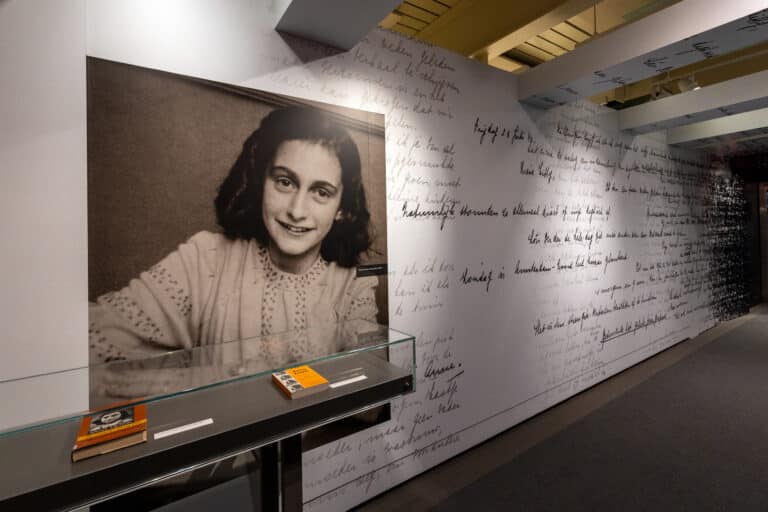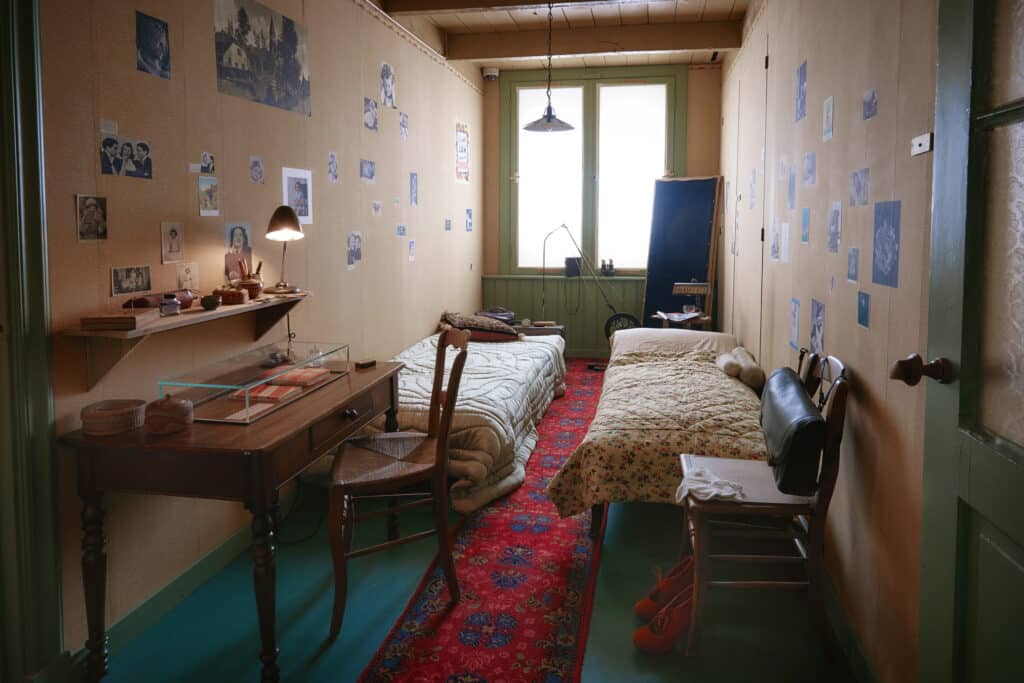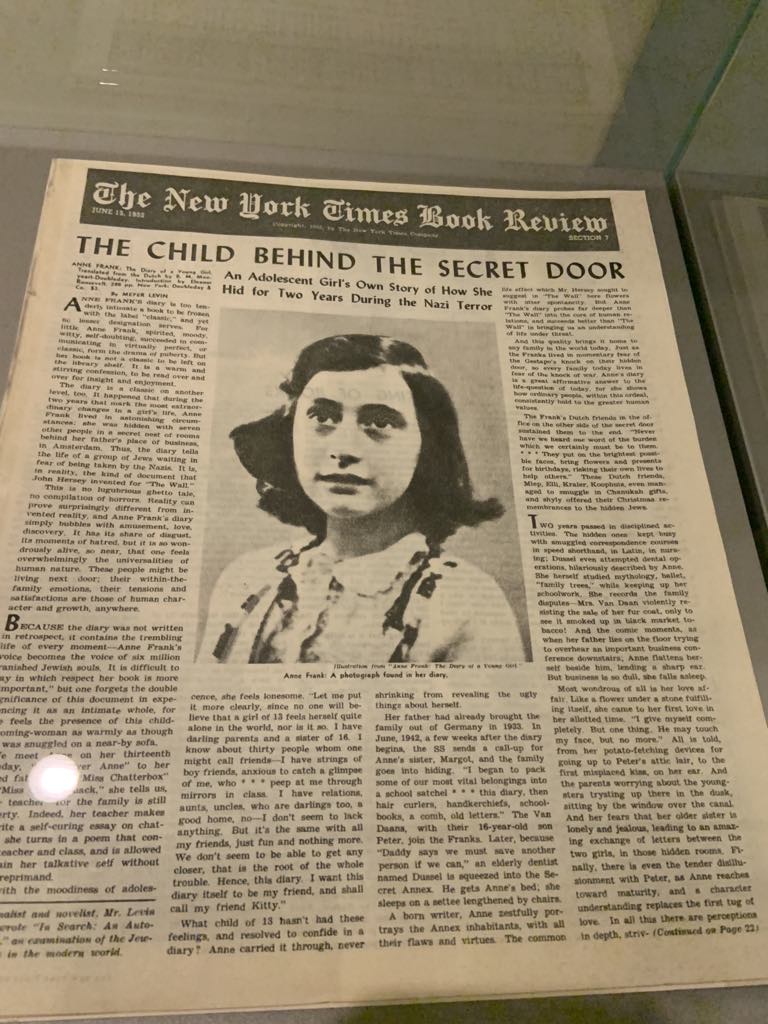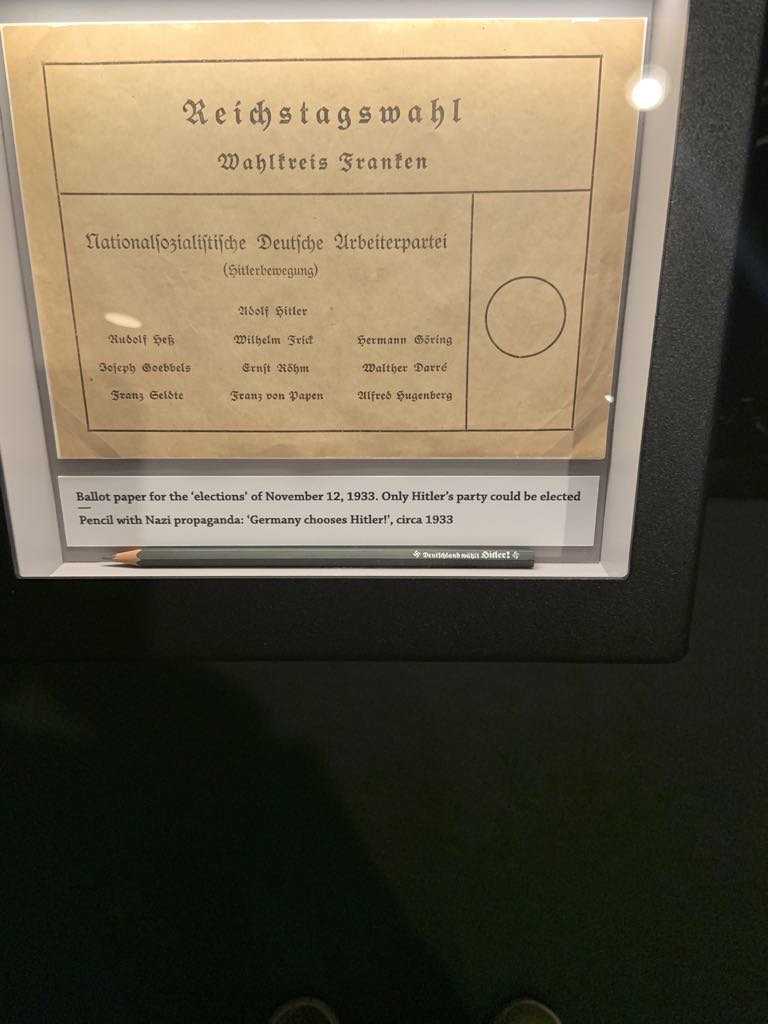
Among the many deeply moving elements of Anne Frank: The Exhibition at the Center for Jewish History in Manhattan, one moment struck me with unexpected force — a fleeting video of Anne Frank, smiling. It’s only a few seconds long, but it’s enough to make her real in a way I hadn’t imagined. I had read her diary, seen film adaptations, and even watched Natalie Portman portray her on Broadway. But seeing her alive — laughing, moving — felt different. It was a powerful reminder that she was not just a symbol, but a teenage girl with hopes, fears, and dreams.
Born on June 12, 1929, in Frankfurt, Germany, Anne Frank perished at the Bergen-Belsen concentration camp in 1945, likely from typhus. This exhibit, which opened on International Holocaust Remembrance Day — coinciding with the 80th anniversary of Auschwitz’s liberation — serves as a potent tribute to her story, one that still resonates today.
The opening also comes as many of the Israeli hostages are being freed, some just five or so years older than Frank was when she died at the age of 15.
Bringing Anne Frank’s world to life
One of the exhibit’s most striking features is a meticulous recreation of the cramped annex where Anne hid for more than two years. The walls are decorated with pictures of movie stars, a reflection of her youthful optimism even in the darkest times. An audio guide reveals the daily struggles she faced — her longing for freedom, her teenage romance with Peter van Pels, and even heated arguments with Fritz Pfeffer over a simple wooden desk. Anne wanted to write; Fritz wanted to study Spanish. These small, everyday battles made her story all the more human.
The re-creation forces visitors to ask difficult questions: How did she endure the constant fear of discovery? Could I have survived in such confinement?
Curator Tom Brink, said the challenge for the new exhibit was not to overload viewers with information.
“If you do an exhibition in Germany, the expectation is a lot of information and texts,” Brink told Unpacked. “We were trying to find a way to include all the information that is necessary, but also to create an experience that resonates and speaks to a younger audience.”

Who Betrayed the Franks? The Mystery Endures
On the morning of August 4, 1944 SS officers and Dutch collaborators stormed the annex and arrested Anne, her father Otto, her sister Margot, her mother Edith and four others who hid with them.
On August 4, 1944, SS officers and Dutch collaborators stormed the annex, arresting Anne, her family, and the others in hiding. While many theories exist about who betrayed them, Brink acknowledges that the truth remains elusive.
“We don’t know the answer,” he said. “There was research beginning in the 1960s. There are theories that someone informed on them but there is also a theory that says they were accidentally found. Perhaps there was a black market or some economic crime and when police came and saw the bookcase, and scratches on the floor, they decided to look behind it. But we just don’t know. It’s still a mystery.”
Otto Frank was the only survivor of the eight Jews hiding in the annex.

A Heartbreaking Plea for Escape
One of the most devastating artifacts on display is a letter from Otto Frank to Nathan Straus, the Jewish co-owner of Macy’s and his former employer, pleading for help in securing visas to the United States. Dated April 30, 1941, Otto’s words are haunting:
“…perhaps you remember we have two girls. It is for the sake of the children mainly that we have to care for. Our own fate is of less importance…”
In 1938, Otto Frank filed an application in Rotterdam to emigrate to the United States. The family’s slim chance at survival was erased when German forces bombed the city in 1940, destroying crucial visa application records.
“I think Nathan Straus tried his best,” Brink said. “I think the bombing was significant because it basically meant no chance, but even if that had not happened, it still would have been a small chance to get a visa to the United States.”

Anne Frank’s Legacy in Print and Beyond
One of the most shocking pieces in the exhibit is a rejection letter from Viking Press, dated December 10, 1947. The publisher declined to release Anne’s diary, stating that “the times are not normal.”
That “unmarketable” book would go on to sell over 30 million copies in 70 languages, becoming one of the most significant literary works of the 20th century. The exhibit showcases multiple editions, alongside the original New York Times review from 1952, in which critic Meyer Levin called it a work “too tenderly intimate to be frozen with the label ‘classic’… and yet no lesser designation serves.”
Brink said he did not think the decision of the publisher was due to antisemitism, but rather the idea that it might not be commercially viable so soon after the end of the war, as civilians wanted to get away from the horrors.
Children Who Vanished
One particularly gut-wrenching display features a class photo from Anne’s kindergarten days. Of the 32 children, 15 were Jewish. Ten perished in concentration camps. As visitors watch a digital screen, the images of these children fade, accompanied by the locations where they were murdered.
A lesson for today
Brink hopes the exhibit will not only educate but inspire action. “Antisemitism has been on the rise for years now,” Brink said. “There is no total answer, but this is one of the answers.”
His comments resonate deeply, particularly in light of recent events. In Brink’s native Amsterdam, Israeli comedian Yohay Sponder’s show was canceled due to antisemitic threats — an eerie reminder that the hatred she faced still exists.
Brink hopes the exhibit will have a big impact on people.
“I think people will take away two things,” he said. “First they will learn about the history of Anne Frank and what it meant to be a Jew in Nazi occupied Europe and the second is the takeaway message: We have to fight antisemitism in our own circle.”
Why Anne Frank’s Story Still Matters
Anne Frank was not the only Jewish teenager murdered by the Nazis. But her diary, filled with dreams, frustrations, and a belief in the goodness of people, continues to touch hearts across generations.
She survived in hiding for 761 days. She never got the chance to see a world without war. And yet, her words endure.
Perhaps that is the greatest tragedy of all.
